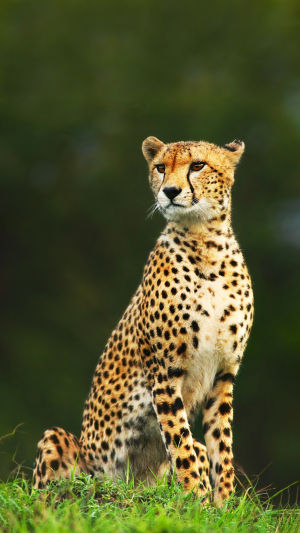The leopard is one of the most widespread carnivores in the world today. They can be found in a wide variety of habitats.
Over the past century, they have experienced extreme habitat loss due to human activities. Their disappearance has been caused both directly by hunting and indirectly by habitat reduction and competition for prey.
This has resulted in a reduction of over 50% of their habitat in Africa and over 80% in Asia, with some populations even becoming extinct.
Genetic analysis of leopards is important for understanding the history, structure, and dynamics of their populations. Of particular importance is the analysis of the entire nuclear genome, which means that the nucleus of the cell contains approximately 2.5 billion DNA bases for all DNA.
In a new study, scientists examined the genomes of various modern and historical leopards, using samples collected from the Natural History Museum. They found striking levels of genetic segregation between leopards from different parts of the world.
Normally, genetic analysis involves collecting fresh tissue samples. However, this is very difficult for an animal like the leopard. These animals are difficult to track, especially in areas where they are rare, and invasive sampling is not friendly to these animals.
And leopards kept in zoos are probably not a good choice either. This is because they may already be the hybrid offspring of multiple leopard species. For these reasons, the researchers have turned their sampling efforts to museums.
One of the most striking discoveries made by the researchers was the clear distinction between African and Asian leopards. African and Asian leopards diverged around 500,000 to 600,000 years ago. This is comparable to the divergence of modern humans and Neanderthals.
By contrast, brown bears and polar bears diverged about a million years ago. It is puzzling, however, that within most of the 2.5 billion DNA bases of the leopard's genome, there is a more genetic separation between Asian and African leopards than between brown bears and polar bears.
This genetic divergence of Asian leopards is explained by their spread outside of Africa. Although there is evidence that leopards in West and South Asia carry relatively similar DNA to African leopards.
This may be due to occasional hybridization, but the overall variability of leopards on these two continents has been maintained.
The extent of this segregation is unpredictable in individual species. Such genetic differences between different species are not even always apparent.
The researchers came to the conclusion that the spread of relatively few individual leopards outside of Africa has had a huge impact on shaping the genetic patterns of these animals around the world.
The second conclusion of the study is that African and Asian leopards have had very different population histories since their separation. African leopards exhibit higher genetic variability and there is less genetic variation between their populations.
In Asia, the influence of geography is much greater, which means that the correlation between genetic and geographical distance is stronger.
In general, leopards are genetically more similar to other leopards that survive in close proximity. This suggests that there is less gene flow and dispersal between different parts of the Asian continent than in Africa.
The leopard samples in the museum have given us valuable new insights into the evolutionary history of the leopard. It also gives us an insight into current leopard populations in the world, even those that are extinct.
The leopard is listed on the International Union for Conservation of Nature's Red List of Threatened Species and is classified as Critically Endangered due to its range. These new studies will help to better target their conservation.





